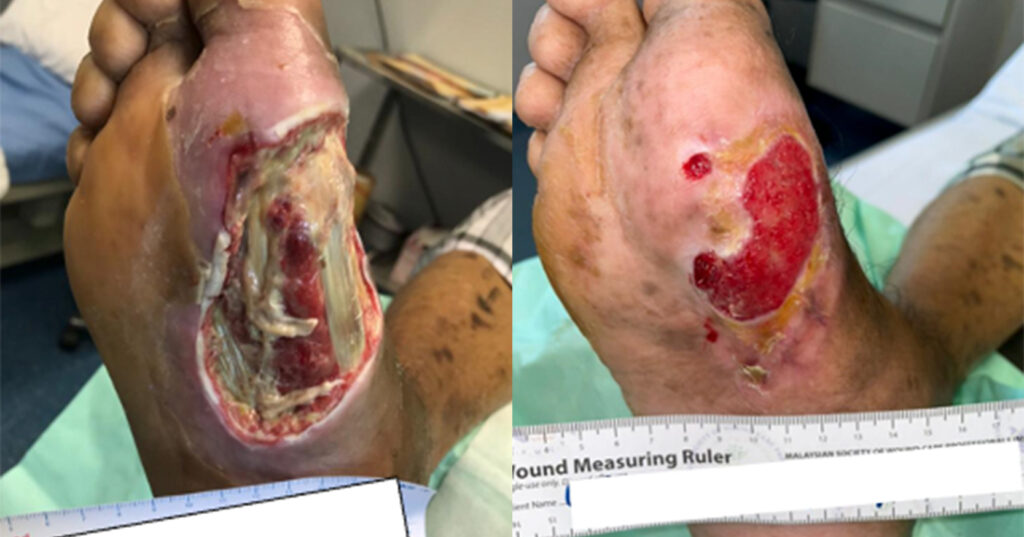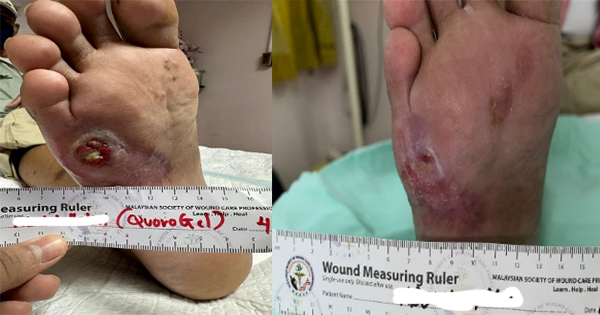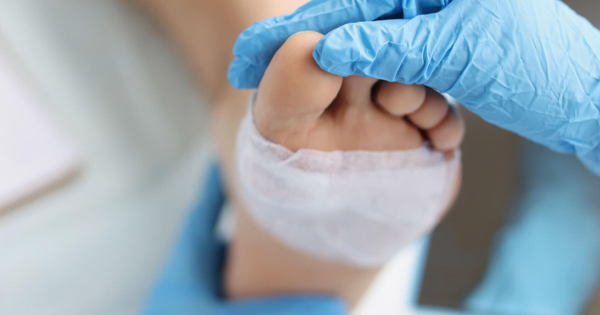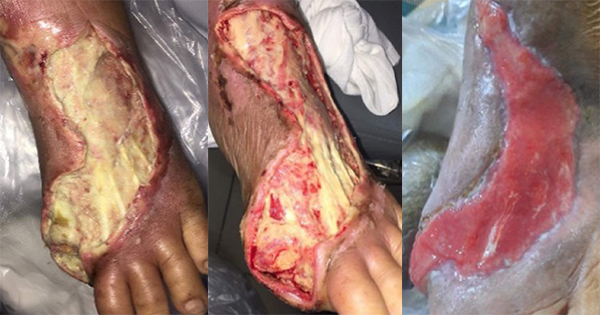It is estimated that approximately 1–2% of the population in developed countries will suffer from a chronic wound in their lifetime (Järbrink et al, 2016). In contrast, in a developing countries, such as Malaysia, it is estimated that a higher proportion, approximately 5–10% of the population, will suffers from chronic, hard-to-heal wounds (Nair et al, 2022). Many of them are associated with complications, such as diabetes, vascular disorders and/or other comorbidities.
Patients with hard-to-heal wounds may experience multiple complications, such as chronic pain, loss-of-function and mobility, increased social stress and isolation, depression and anxiety, increased financial burden, and also mortality, all of which will impact the quality-of-life (QoL) of both the patient and their family. Octenidine is an established antiseptic and represents an alternative to other antimicrobial agents, such as chlorhexidine, povidone-iodine and polyhexamethylene biguanide (Hübner et al, 2010).
In this case series, octenidine-based treatment was used to treat patients with chronic wounds to determine its efficacy, safety and tolerability.
Methodology
These case reports detail the findings of patients who received treatment at the wound care clinic at Kuala Lumpur Hospital, Kuala Lumpur, Malaysia. Patients with venous leg ulcers (VLU) or diabetic foot ulcers (DFU) we recruited at ramrod. The patients were assessed using TIME (Tissue, Infection or Inflammation, Moisture balance and Edges of the wound or Epithelial advancement) assessment (Nair, 2022), Harikrishna Periwound Skin Classification (HPSC; Table 1; Nair, 2017) and visual analog scale (VAS; Figure 1). All patients’ the wounds were HPSC Class 2 or Class 4.
All wounds were cleansed with octenidine-based solutions (either Octenilin® wound irrigation solution or Octenisept® antibacterial cleansing solution) and underwent proper debridement to facilitate the reduction of biofilm burden and to suppress biofilm reformation. After which, Octenisept® Gel was applied. The gel acts by forming a barrier against pathogens and helps loosen the wound coating to ensure healthy tissue growth. Finally, after wound bed preparation, Octenicare® Repair Cream was used to aid regeneration of the skin around the periwound areas to ensure elasticity and to prevent wound breakdown.
The procedures of wound cleansing, application of wound gel and periwound management were repeated 3 times a week in our wound care clinic. Wound progression for each patient was observed over a maximum period of 13 weeks.
Results
Patients were included in the study if they had failed to respond to a minimum four-week treatment of hydrogel-based wound care products before enrolment. Before enrolment into this study, all patients underwent treatment with two different commercially available hydrogel-based wound care products for a minimum of four weeks, but their conditions did not improve (data not shown). Of the four patients two (Case 1 and 2; both DFUs) had an infected wound at the start of the study. They were being treated with antibiotics (ampicillin/sulbactam). Cases 1–4 show the treatment and condition of the wounds in greater detail.
Discussion
In this case series, we demonstrate that octenidine is effective in promoting wound healing for chronic, hard-to-heal wounds with no side-effects reported during this study (Table 2). All four patients underwent wound debridement to stimulate a better and faster healing process. With the use of these octenidine-based antiseptic products, in combination with oral antibiotics (for the DFU cases), the infected wounds progressively healed without complications. The wound care products used were Octenisept antibacterial cleansing solution, Octenilin wound irrigation solution, Octenisept gel and Octenicare repair cream. Within 13 weeks’ these wounds had shown improvement in terms of reduction of their size, promotion of epithelialisation, granulation and reduction in bioburden, all leading to the desirable outcome of a proper wound closure.
Limitations
This is a small case series consisting of only two wound types. Further prospective trials are required to corroborate this work.
Conclusion
This case study series demonstrate the clinical efficacy, tolerance, and safety of using octenidine-based products to promote wound healing in chronic wounds.








